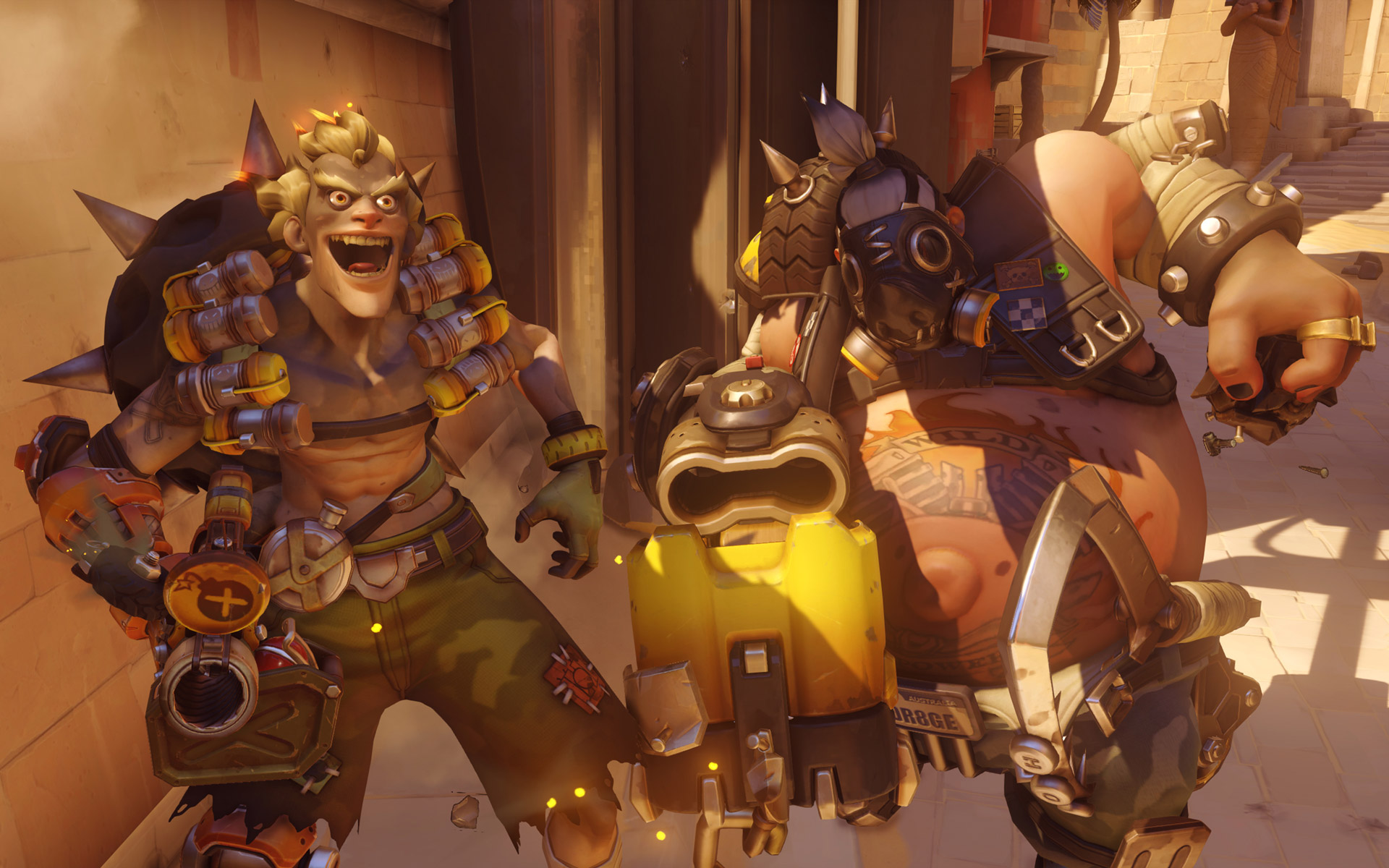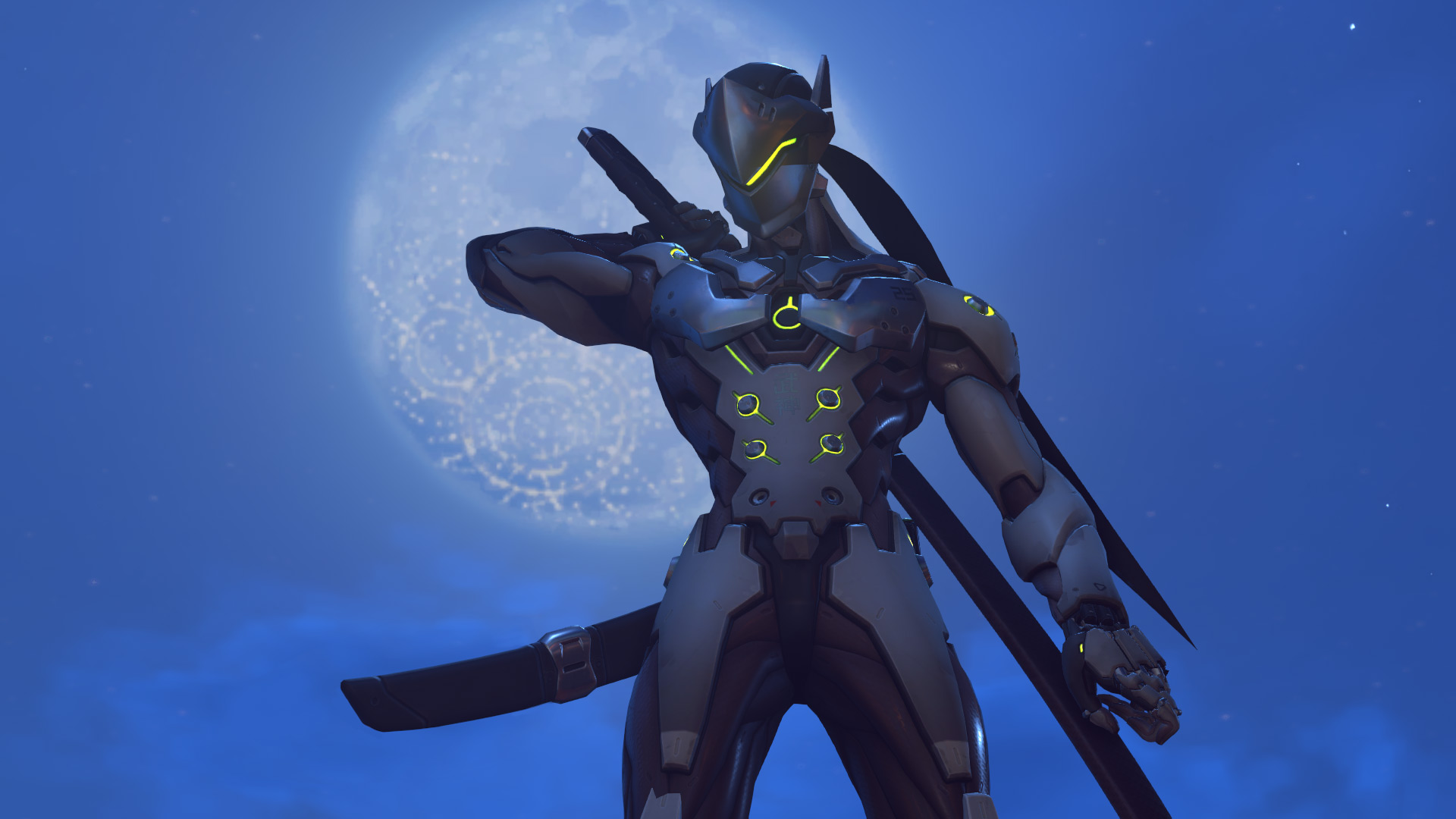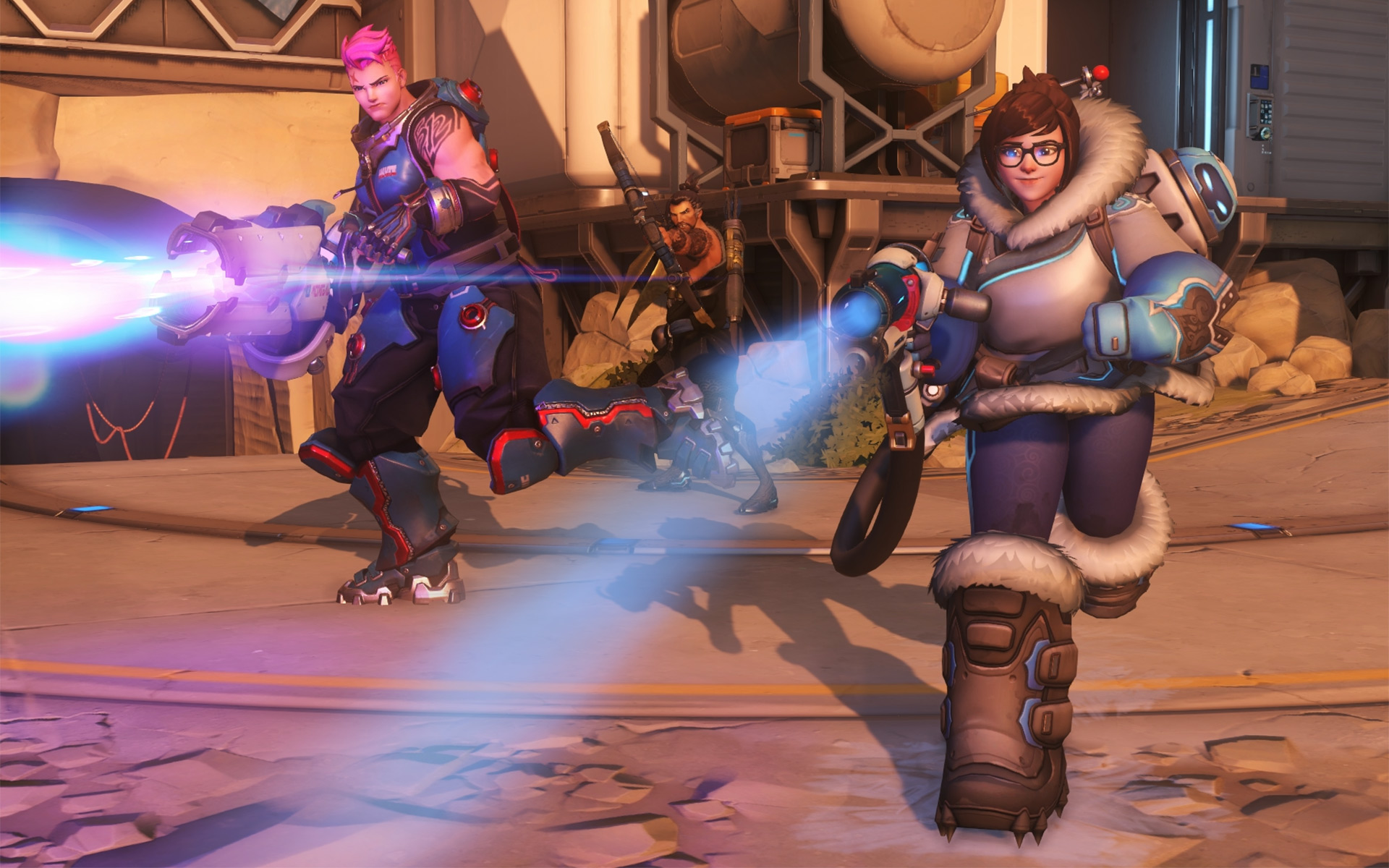
Overwatch sounds like a game I shouldn’t want to play: a hero-focused team shooter that seems aimed at players given to godlike acts of ballistic skill. But I should know better. This is Blizzard we’re talking about, after all, a studio that turned a generic fantasy-verse born from a niche real-time strategy game into a global online roleplaying sensation. (And in just a few weeks, a $160-million-to-make film by a BAFTA-winning director.)
After chatting with Overwatch director Jeffrey Kaplan, I’m almost convinced it’s a game for me—the sort of lapsed, Quake-era clanner who’s lost interest in competitive shooters. Here, by way of our lightly edited conversation, is a rundown of why.
It’s a team shooter that transpires on a near-future Earth
“At its core, Overwatch is a game that takes pace in a bright, hopeful version of what we imagine planet Earth to be sometime in the near future,” says Kaplan when asked to sum up game’s premise. “The predominant focus of the game is on really deep, exciting heroes and the cool abilities and the epic, over-the-top battles they have. These battles are taking place on a global battlefield in a number of exotic locations, so anywhere from Greece to Egypt to China to Japan, spanning the globe.”
“The game is what we call a team-based shooter, and that means you’re always playing with and against real people. We do have a play versus the computer mode, but at its core, you’re playing competitively against and with other players. The real focus of the shooting in the game is not to chase realism. We don’t have real world guns in the game. You’re not playing a soldier in a present-day military conflict. The game tries to stretch the imagination of . . . almost like what would these heroes be if you thought of them more as superheroes, and what would superheroes with guns look like.”
Blizzard drew from all shooter eras
“The shooting itself, we took a lot of inspiration from present-day shooters,” says Kaplan. “We love games like Call of Duty and Battlefield and think very highly of them. But we also took a lot of inspiration from old school shooters, like Quake and Doom and Unreal and Tribes. The shooter’s a celebrated genre that’s been around for decades, and we wanted to take inspiration from the whole thing, not just one era.”
It’s meant to appeal to team-play fans as much as shooter wonks
“It’s always a Blizzard goal to speak to as wide an audience as possible,” says Kaplan. “With our games, our development process is to always focus on the core or hardcore elements first, so we know we have something rich and deep and long lasting. We don’t start out casual, but once we’ve had that core of deep, rich, re-playable gameplay, we look at other ways of expanding the audience and going ‘How could we make this more approachable to people?'”
“With Overwatch, the game obviously speaks to a lot of shooter fans. They were instantly attracted and some of the earliest adopters in our community. But what’s cool about Overwatch is, because we were putting such a focus on team play and unique heroes, the MOBA [multiplayer online battle arena, a real-time strategy genre variant] audience started to take note of us, because there were all these fantastic MOBAs out there. Heroes of the Storm, League of Legends, Defense of the Ancients 1 and 2. They’re not shooters, but they’re team-oriented games where the main objective is ‘Do we win or lose as a team?’ So those players started to take notice. That had an instant broadening effect on the audience, where we weren’t just speaking to shooter fans anymore.”
You don’t need to be good at shooters to excel at Overwatch
“We did a lot with the gameplay itself to make it more approachable,” says Kaplan. “Obviously things like the tutorial, and putting a practice range in the game where you can safely play any hero without fear of dying. But it’s also in how we approached the hero design itself, where we focused on abilities that would speak to players who weren’t instantly knowledgeable about twitchy shooter gameplay, like someone who can’t put the reticle over a target at 100 meters out.”
“So we designed things like one hero’s gun having a lock-on beam, or another’s that doesn’t require precise aim but has more of a cone attack that could hit any enemy without having to be precise with crosshairs. We added healing classes that don’t require precise aim to do their healing. So a player who’s never played a shooter before, or was more familiar with team-based games like a MOBA, could instantly come in and be effective and contribute to their team, even if they lacked the twitch skill to put crosshairs over targets downrange.”

And here’s one of the most important ways Blizzard thinks it’s met that goal
“Our progression system is so simple,” says Kaplan. “You play matches, you earn experience points, with experience you gain levels, and every time you gain a level you earn a loot box. It sounds super-basic, but we actually struggled with the progression system for years. We had two previous systems, and they had power progression where if you played a certain hero more, that hero would get better. But we realized we were creating a schism between players who would play more, versus those with less time. And what was interesting about moving away from that system, is that both the hardcore and casual were very pleased that we took power progression away and moved to a more cosmetic system.”
“The hardcore didn’t like power progression because they will always argue that the playing field should be as even as possible, and that time investment shouldn’t count for player skill or power. And the casual loved it because it protected their choice to maybe not play as much. Plus it solved a problem with the basic way you read the game, because with power progression, you had no way of determining if someone was good or not.”
It’s part of the recent move toward more optimistic science fiction
“It’s going to sound like we did this strategically, but we honestly did it because it’s what our passion and instincts were,” says Kaplan. “When it comes to the setting and art style and tone of the universe, a lot of games like to approach the future in either a very dystopian way, or a post-apocalyptic way, or a combination of the two. We kept asking ourselves, because we’ve explored fantasy universes before with Warcraft and Diablo, and we’ve explored science fiction with StarCraft. But we’ve never really done something that takes place on planet Earth before.”
“So we started asking ‘What could be exciting in the Blizzard style that would speak to our developers and get them excited about doing a game in the near future on Earth?’ We wanted to make something bright and welcoming, that featured a lot of deep, rich colors. A lot of the modern realistic games tend to focus on gritty gray, brown palettes.”

“We felt it wasn’t a space that’s been commonly explored. There aren’t worlds built like this for you to adventure in. I don’t want to discount any work that anyone else has done, because every video game is extremely difficult to make. But I think it’s almost more difficult to try to make a super-interesting, compelling, bright, hopeful future, than it is to make one that’s wrecked and bombed out. There’s an immediate emotional impact, like if I were to say ‘Our game takes place in Washington, D.C. in the future and the White House has been bombed out,’ there’s an immediate emotional impact that comes with that.”
“But I think it’s different when you look at the creative challenge of saying ‘We want to do a game that takes place in the near future and we think there’s this amazing base that exists on the Rock of Gibraltar.’ I think it’s a much more difficult creative challenge, to figure out a way to get players to emotionally respond to that and understand it. And it’s been our experience with our previous games, that if you broaden the art style and make it inviting and welcoming, you can broaden the audience as well.”
Labels like casual and hardcore probably confuse more than help
“It’s something that I think not only Blizzard, but me as a developer have been wrestling with for years,” says Kaplan. “There’s this desire to categorize players, to declare that there’s such a thing as competitive, hardcore and casual. People seem to want to stratify and organize players by different play styles. And I was always fascinated, because I spent many years working on World of Warcraft, and casual and competitive and hardcore . . . these terms are all so subjective.”
“So I would have people come up to me and say, ‘I really enjoy World of Warcraft. I’m just a casual player, like I only raid twice a week, but I really love World of Warcraft.’ And then you’d have somebody else say ‘I’m super hardcore in World of Warcraft, I’ve been loving the game and I’m about to get max level in it.’ I don’t think players know how to stratify themselves into these categories they’re creating. I wish people would talk more in terms of ‘Here’s how the experience is fun or not fun for me’ and not worry so much about the gamer to their left or right, and trying to figure out if the way they’re playing is correct or not. Some of us who are a little bit older and have been playing games our whole lives realize that there’s an ebb and flow to how hardcore or casual we can be at any time, and I think that makes us more open minded.”

Kaplan says it’s about ‘inclusivity even more than diversity’
“We very much believe in inclusivity at Blizzard, and I like to talk about inclusivity even more than diversity,” says Kaplan. “We want Overwatch to be this bright, positive universe, where everybody feels like they could be a hero. That’s our most basic goal. It’s to say ‘It doesn’t matter what my walk in life is, or the dice roll I got. Did Blizzard make my exact situation an Overwatch hero? Maybe, maybe not, but I could absolutely see how it could be included in that universe.'”
“The funniest part about Overwatch from the get-go is that what excited us creatively was this cast of heroes who were epic and unique, where no hero was like another. Early on we talked about that in terms of the gameplay, like we don’t have two rocket launcher heroes, for example. But it started to permeated every decision we made, how these characters look, what gender, what body type and how they associate themselves. This may sound bizarre, but the great diversity in Overwatch is more a byproduct of us wanting to make really unique, awesome heroes that spoke to the team creatively.”
More Must-Reads from TIME
- Cybersecurity Experts Are Sounding the Alarm on DOGE
- Meet the 2025 Women of the Year
- The Harsh Truth About Disability Inclusion
- Why Do More Young Adults Have Cancer?
- Colman Domingo Leads With Radical Love
- How to Get Better at Doing Things Alone
- Michelle Zauner Stares Down the Darkness
Write to Matt Peckham at matt.peckham@time.com